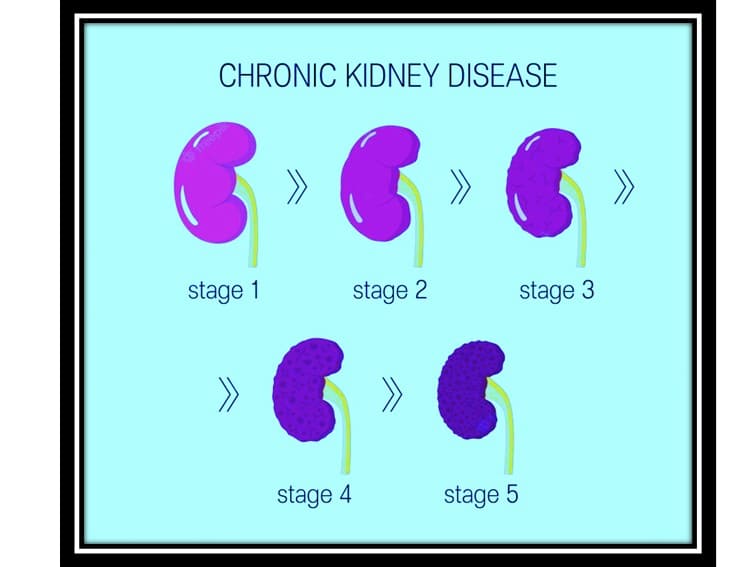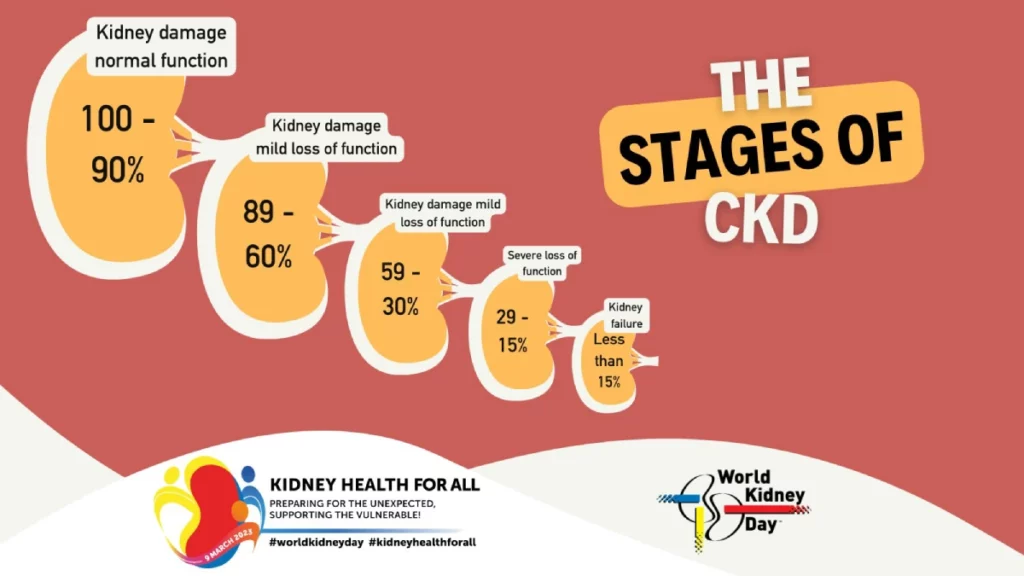5 stages of kidney disease | Dr. Kavitha Gone Explains
Kidney disease is a silently progressive disease. The functional efficiency of kidneys gradually diminishes over time and eventually reaches a point where kidneys no longer work. The chronic kidney is divided into 5 stages. with every passing stage, Kidney function gets worse. In the early stages, the kidney’s ability to filter waste out of the blood slows down. Though kidneys function hampers, the disease progresses without causing any symptoms. As the disease gradually progresses, symptoms develop generally in the 4th and 5th stages.
Let us try to understand the different stages of chronic kidney disease (CKD) based on GFR and get a brief overview of each of the 5 stages of kidney disease:
Stage 1: The value of GFR is 90 and above indicating normal kidney function, but there could be some changes in the kidney structure or there may be some blood or protein leak in the urine
Learn more about – Protein leak in urine (proteinuria)
Stage 2: The value of GFR goes down and it comes in between 89 to 60. Kidney damage is mild Kidneys still work well – and therefore, symptoms do not appear, but there could be a protein or blood leak in urine.
Stage 3: The value of GFR goes down and it falls between 30 and 59. Kidneys do work and filter waste and extra fluid rather less efficiently with moderate damage. There could be some complications such as high blood pressure, anemia, and bone disease. The symptoms start to appear gradually.
Note: Early diagnosis, treatment and regular follow-up care by a nephrologist at this stage and healthy lifestyle changes can ensure that the progression of kidney disease to stage 4 or stage 5 can be prevented.
Stage 4: The value of GFR comes down further to between 15 to 29. At this stage, kidney damage is severe as kidneys do not work normally. Waste builds up causing high blood pressure bone disease and heart disease. The symptoms such as swelling in hands and legs, breathlessness, foamy urine, itchy skin, tiredness, and fatigue appear.
This is the stage before kidney failure. Therefore, regular visits to a nephrologist can help in slowing down kidney damage and also planning ahead for a potential treatment for kidney failure.
Stage 5: GFR less than 15 means kidneys have been damaged severely. This is the last stage of chronic kidney disease indicating that kidneys are getting closer to failure or have already failed. A person at this stage of kidney disease becomes very sick with other health issues. When kidneys fail, there are two options to survive – dialysis and or kidney transplant.
Learn more about dialysis
Bottom Line
Chronic kidney disease (CKD) progresses in stages and finally leads to kidney failure. People with diabetes, high blood pressure, and a family history of kidney disease are at risk of developing CKD. Experts recommend kidney disease screening for those who are at risk to detect kidney disease early and to stop it from progressing further.
This is the only way to detect whether a person has kidney disease. If you think you are at risk, then meet your nephrologist today to save your kidneys.


Leave a Reply